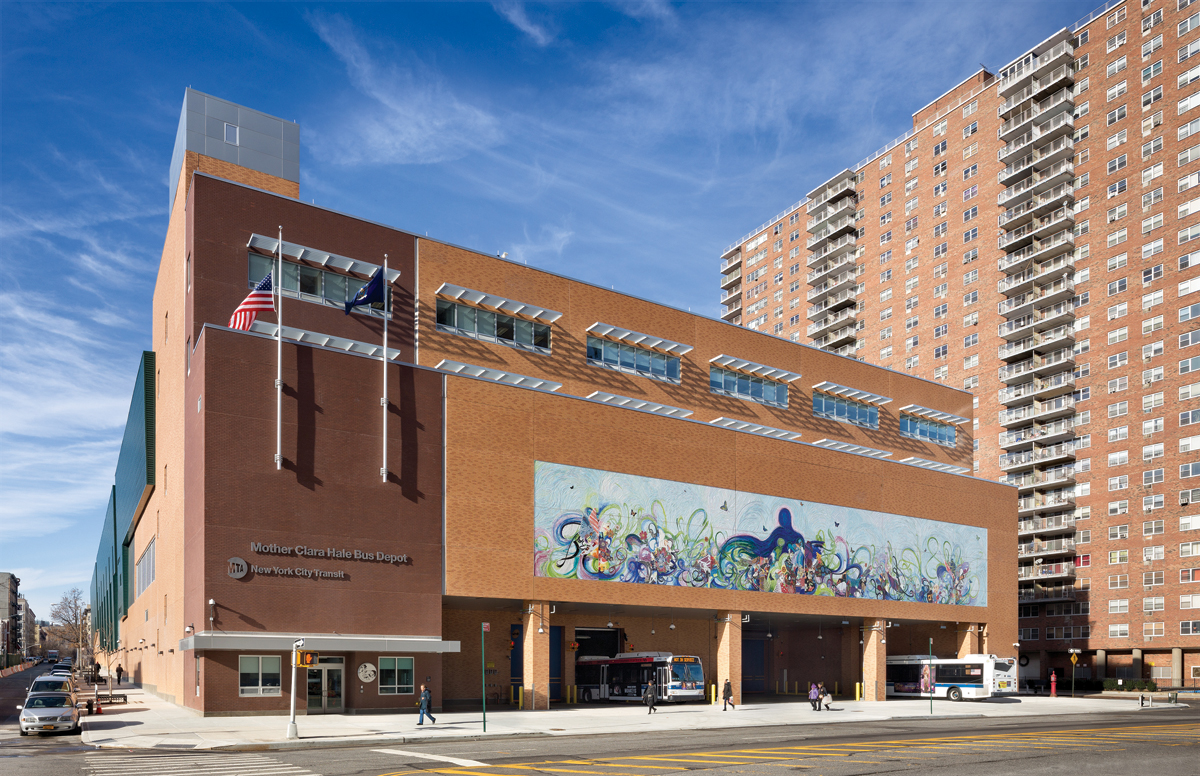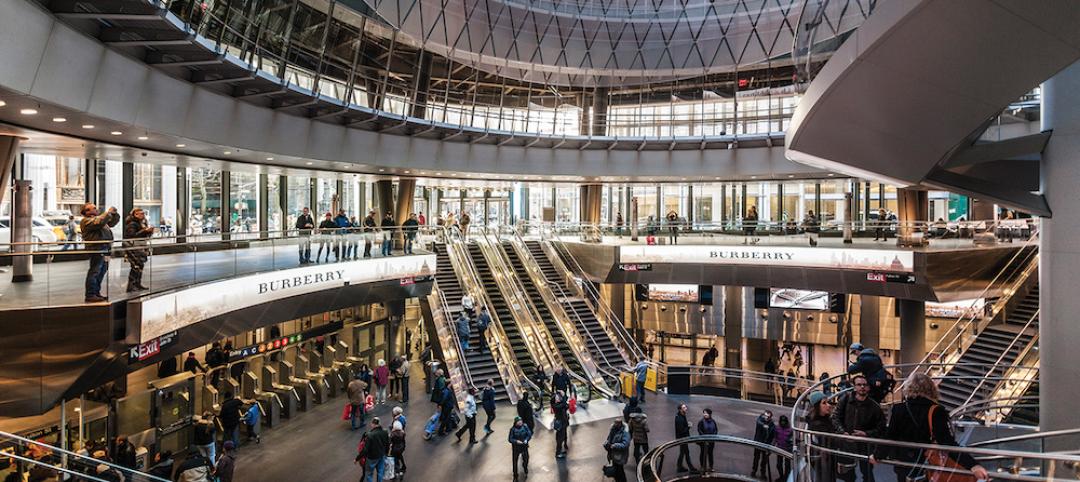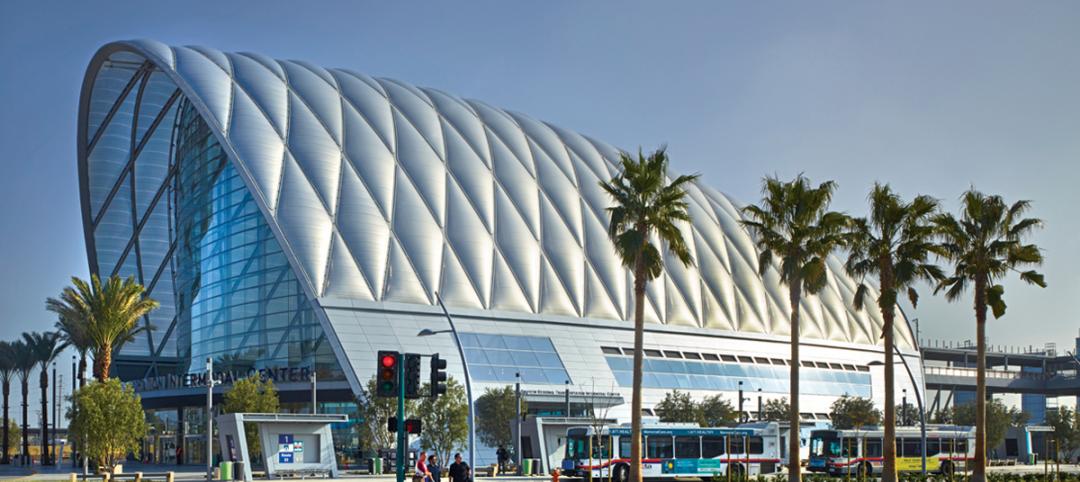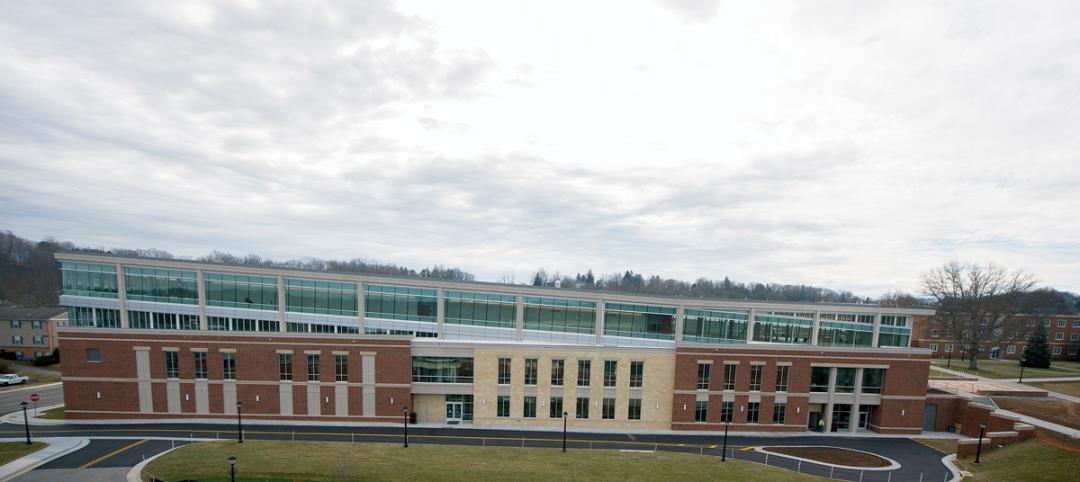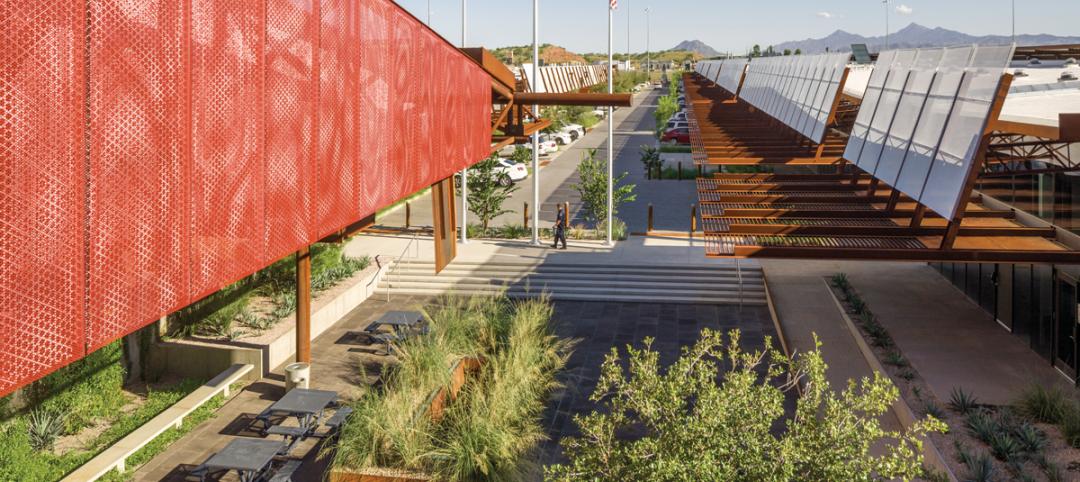Mother Clara Hale (1905–1992) was an American humanitarian who founded Hale House for unwanted children born with drug addictions. One year after her death, a bus depot on 146th Street in New York’s Harlem neighborhood was named after her. That building—erected in 1890 as a trolley barn, and razed and rebuilt as a bus depot in 2009—is now projected to be the first major LEED-certified bus depot in the country.
The owner, MTA New York City Transit, involved more than 150 community leaders in its first-ever community design charrette. Out of those meetings emerged a design that focuses on safe, efficient operations, with an emphasis on getting buses off the street as quickly as possible. To achieve that goal, the Building Team had to consider accessibility, clearance, service utilities, and lighting for each area and function.
This was not an easy building to work with. Given the magnitude of the facility, the structure was designed as three separate buildings connected via expansion joints to accommodate thermal movement. Soil conditions were poor. Lateral seismic loads were much greater than from wind. The dynamically shaped façade uses a potpourri of materials and systems—concrete masonry, precast concrete, curtain wall, storefront, art glass, and metal panels.
PROJECT SUMMARY
SILVER AWARD
Mother Clara Hale Bus Depot
New York, N.Y.BUILDING TEAM
Submitting firm: STV (architect, structural/MEP engineer)
Owner/developer: MTA New York City Transit
General contractor: Silverite
Construction manager: CB&IGENERAL INFORMATION
Project size: 390,000 sf
Construction cost: $225 million
Construction start to occupancy: November 2010 to December 2014
Construction method: Design-build
Architecture/engineering firm STV had to develop a complex system of steel member cantilevers from the floor edge to provide support at each transition and interface. The Building Team also relied heavily on BIM to integrate the design, help contractors link components with activities, and cut production time.
The depot features 12 service stations and two articulated workstations with six portable lifts. Half of the roof is cooled with CO2-absorbing plants; the other half has a reflective white surface. The facility’s 50,000-gallon rainwater collection system should reduce water use by one million gallons a year. A passive heating panel on the south façade allows air to be pulled in and preheated in the space between the façade and exterior masonry.
“The city of New York created an artistic centerpiece for the Harlem neighborhood,” says Terry Fielden, LEED AP BD+C, Director of K-12 Education at ICI, and a Building Team Awards judge. “The combined use of exterior artwork with the desire to conserve water resources sends a message of commitment to sustainability. The effort is a reminder that even a basic and functional facility can be a focal point of character in an urban environment.”
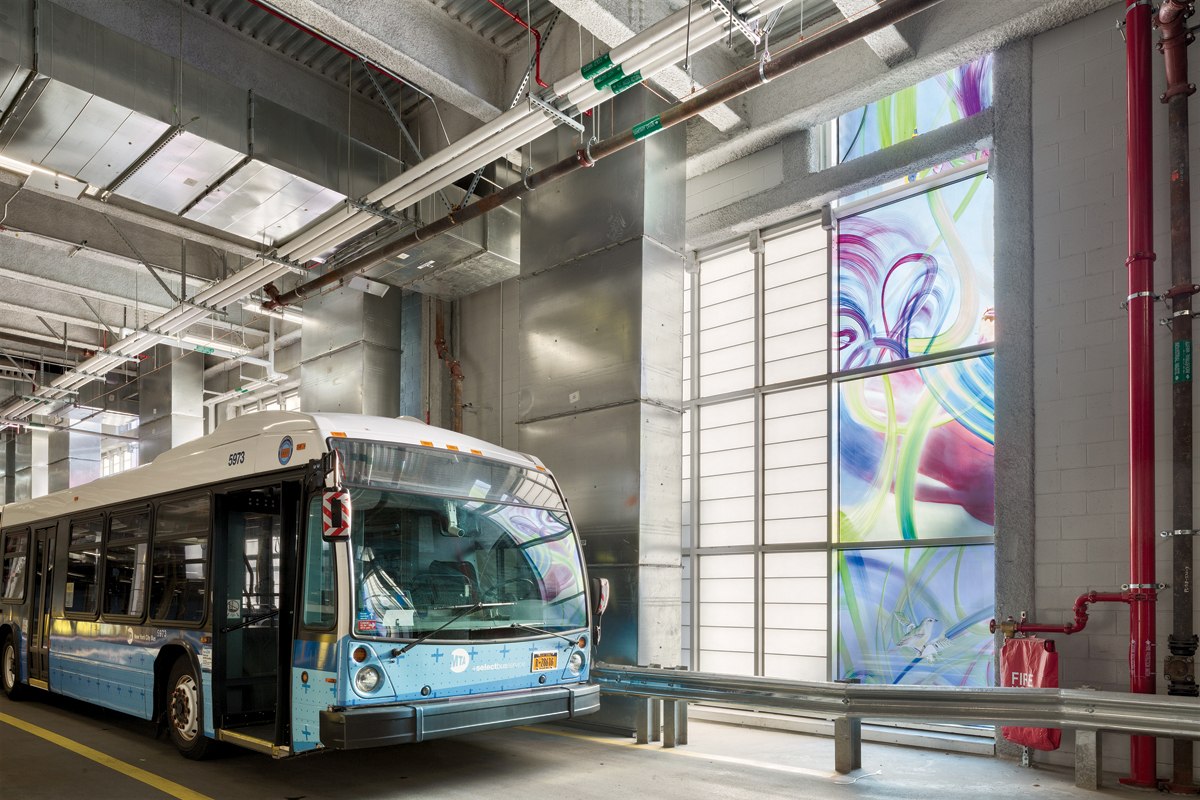 The Mother Clara Hale Bus Depot in Harlem is the first LEED-certified bus stop in the U.S.
The Mother Clara Hale Bus Depot in Harlem is the first LEED-certified bus stop in the U.S.
Related Stories
Building Team Awards | May 16, 2016
12 building projects that represent the best in AEC team collaboration
A busy, light-filled Manhattan subway station and a pebble-shaped Chicago library are among the winners of the 19th annual Building Team Awards.
Architects | Jan 18, 2016
EHDD’s Monterey Bay Aquarium wins AIA Twenty-five Year Award
The aquarium set new technical standards for the building type, which still influence today, such as the flow-through seawater-based heat pump system, naturalistic exhibitions, and corrosion protection.
Building Team Awards | Apr 10, 2015
14 projects that push AEC teaming to the limits
From Lean construction to tri-party IPD to advanced BIM/VDC coordination, these 14 Building Teams demonstrate the power of collaboration in delivering award-winning buildings. These are the 2015 Building Team Award winners.
Building Team Awards | Apr 10, 2015
Prefab saves the day for Denver hospital
Mortenson Construction and its partners completed the 831,000-sf, $623 million Saint Joseph Hospital well before the January 1, 2015, deadline, thanks largely to their extensive use of offsite prefabrication.
Building Team Awards | Apr 10, 2015
Anaheim’s soaring intermodal hub
Anaheim's Regional Transportations Intermodal Center is the largest ETFE project in North America.
Building Team Awards | Apr 10, 2015
Virtual collaboration helps complete a hospital in 24 months
PinnacleHealth needed a new hospital STAT! This team delivered it in two years, start to finish.
Building Team Awards | Apr 10, 2015
New arts venue reinvigorates Virginia Tech's campus
The STV-led Building Team creates a world-class performance and arts venue with learning and entrepreneurial dimensions.
Building Team Awards | Apr 9, 2015
Multifaced fitness center becomes campus landmark
A sloped running track and open-concept design put this Building Team to the test.
Building Team Awards | Apr 9, 2015
Setting the bar for port-of-entry design
Whenever you eat a tomato from Mexico, there’s a one-in-three chance it came through this LEED Gold gateway.
Building Team Awards | Apr 9, 2015
Big D’s billion-dollar baby: New Parkland Hospital Tops the Chart | BD+C
Dallas’s new $1.27 billion public hospital preserves an important civic anchor, Texas-style.


